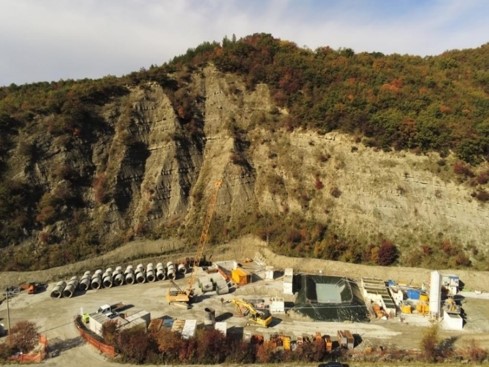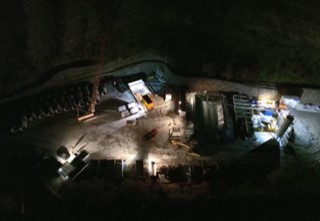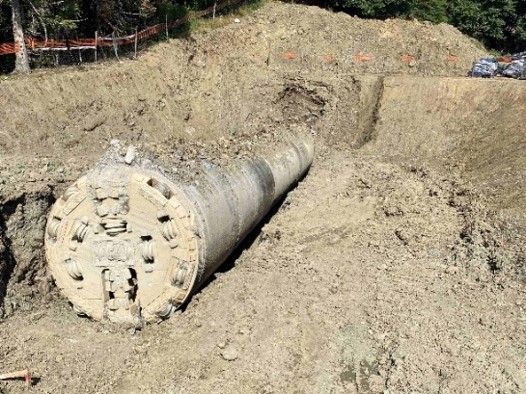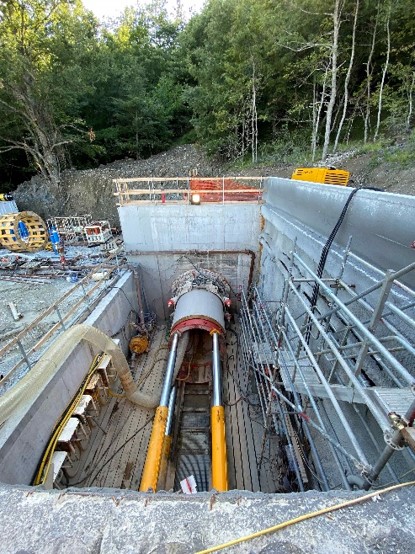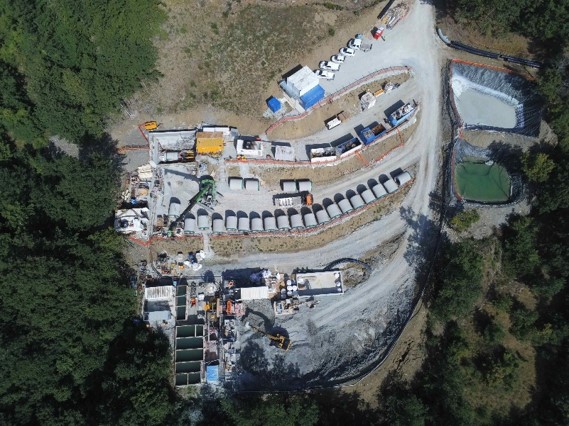Microtunneling and Direct Pipe
1427 –Sansepolcro
Works:
Execution of part of the civil works necessary for the construction of reinforced concrete microtunnels, as part of the laying of the Rimini Sansepolcro methane pipeline under construction. Lot 2 DN 650/750 (26/30''), DP 75 bar, length 32.510 km and related works.
Customer:
Snam Rete Gas S.P.A.
Buyer:
Max Streicher S.p.A.
Period of Execution:
August 2020 - January 2022
Works Amount:
€ 11.856.000,00
Description
The project called “Renovation of Rimini – Sansepolcro methane pipeline DN 650/750 (26″/30”), DP 75 bar and related works,“ has as its main purpose the construction of a new gas pipeline, replacing the existing ‘Rimini – Sansepolcro DN 650 (26’), MOP 70 bar” methane pipeline that is being decommissioned. I.CO.P. S.p.A. was in charge of the construction of 3 crossings along the route of Lot 2, executed with trenchless technology of the microtunnelling type.
Characteristics of the intervention
MT POZZALE
During the study and preparation phase of the crossing, the following aspects worthy of special attention were identified:
- nature of the soils: rock with potentially unstable/degraded sections, at potential fault zones;
- geometry of the crossing: relevant length of the microtunnel, in combination with the geo-lithological features highlighted above.
Viewed these potential critical issues, construction risk mitigation measures have been identified and implemented, mainly directed at managing the thrust force required for advancement:
- adoption of an innovative system for managing over-excavation lubrication, of an automatic and remotely controlled type;
- use of reinforced concrete segments with a high value of allowable thrust force, having increased thickness (sp=25cm) and made of high-strength concrete (C50/60);
- during drilling, monitoring of the trend of the thrust force required for advancement along the development of the microtunnel by checking the value of this force at the installed intermediate thrust stations.
In addition to these measures, a contingency plan was prepared to allow the completion of the crossing even in the event of a blockage of advancement caused by the presence of extremely high friction along the tunnel. The plan consisted of equipping the tunneling machine with a special element called a push-module, which allows the transition from the pushed-pipe advance system (pipe-jacking) to the segmented advance system (segmental lining) typical of large-diameter tunnels. In the present case, in view of the small inner diameter of the tunnel, the module was designed ad-hoc for the size of the microtunnel; in addition, provision was made for the segments to be made – if necessary – with bolted metal panels, instead of using standard reinforced concrete ones.
Thanks to careful management of lubrication and excavation parameters, the crossing was completed without the need to employ push-module, or to activate intermediate push stations to fractionate the thrust.
MT MONTE LOGGIO
Given the geometry and location of the Monte Loggio crossing, which had a high elevation difference (122 m approx.), some solutions were necessary to optimize the workings:
- provision was made for the installation of a brake attached to the header wall of the pushing station. At the end of a push/forward cycle, the jacks of the main push station are retracted to create the space necessary to lower a new pipe into the well; at this stage the installed device that blocks any possible retraction of the pipe column toward the well comes into operation.
- the location of the site area, at an elevation of +975 m a.s.l., posed considerable logistical difficulties. It became necessary to design a new track to access the site and an in-depth study to limit space and manage transport of both pipes and excavated material. In this regard, intermediate yards, located downstream from the access track, were exploited, from which the material was moved by short length tractor trucks and construction equipment.
- No. 10 intermediate pushing stations were installed, arranged to divide the advancement of the pipe column into sections with a maximum length of 90-100m.
The proper management of excavation and lubrication in the soils intercepted during the advancement (mainly cracked marl and “soil-like” rock) allowed the completion of the section by pushing only the trolley installed in the advancement station.
MT POGGIO DELLA TRAVAIA
The crossing of Monte della Travaia had several critical issues, which were analyzed by the Writer to best optimize the drilling. The main ones are listed below:
- High overburden, up to more than 110m below the p.c., and spring-cord profile with final slope at about 9%. The presence of a creek with a sunken riverbed near the thrust post required the execution of a rather deep (about 10m) rock-cut thrust shaft. This solution was necessary to overcome the permeable layer and provide the necessary cover above the microtunnel piping.
- Considerable difference in height between the start and finish locations (about 70m);
- Considerable length of the crossing (about 1250m);
- The work zone was located at an altitude of about 800m. The drilling work was carried out in the winter period with adverse weather conditions: this led to difficulties in the management of transport and equipment due to the presence of snow and cold temperatures, followed by water management problems during excavation due to the significant water load generated by melting snow.
Given the geometric characteristics of the route and the nature of the soils, as a mitigation measure of risks related to a possible blockage of the push advance, it was decided to design and install from the beginning of drilling activities, the additional element called “pushmodul”. This element, placed at the tail end of the modules that make up the TBM, allows the transition from the “pipe jacking” to the “segment lining” type of advancement system.
Given the small size of the planned microtunnel, ICOP arranged with the module manufacturer to study a compact system capable of operating with metal ashlars and not, as is the case in the usual ashlar tunnels, with the standard concrete system. The soils that affected the crossing (essentially altered and cracked marls and marls), combined with the presence of localized zone in the rock mass with abundant pressurized water flow, finally resulted in the need for an in-depth study of the overburden lubrication mixture.
In the course of advancement, the presence of moving water resulting from runoff along rock fractures caused significant problems in the maintenance of fluid in the overburden and the consequent increase in lateral friction and thrusts due to partial runoff. By modifying the mixture composition parameters and optimally managing the drilling data, the writer was able to complete the crossing within the planned contract timeline and without incurring the use of push-modul.

